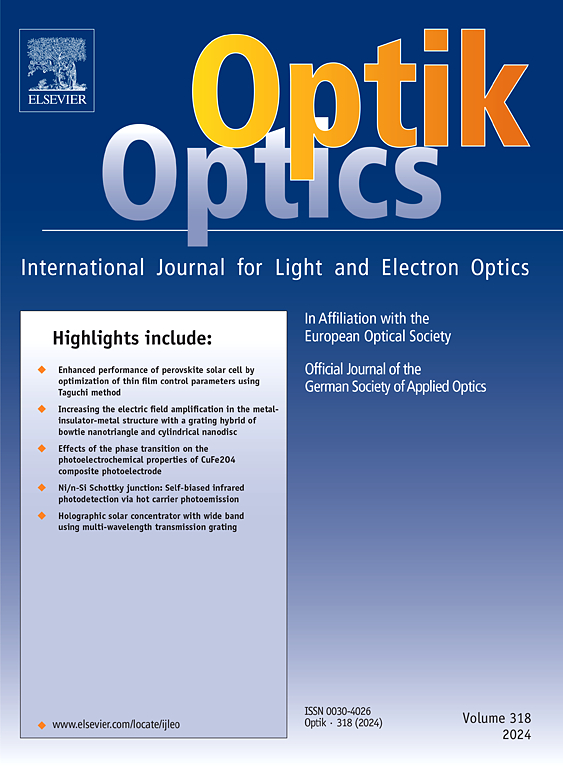Dynamic modulation of terahertz photonic orbital angular momentum superposition states based on vanadium dioxide metasurface
IF 3.1
3区 物理与天体物理
Q2 Engineering
引用次数: 0
Abstract
The combined state of photonic orbital angular momentum (OAM) offers more degrees of freedom compared to an OAM state, revealing rich physical implications and significant engineering potential. In this paper, we propose a dynamic control scheme employing a VO₂ metasurface to generate two polarization-dependent OAM channels, enabling multiplexed terahertz OAM superposition states. This design doubles channel capacity and supports dynamic switching between superposition and single OAM states via VO₂ phase transitions. We designed and simulated two types of OAM-superposition metasurface generators. The first design features a VO2-Au hybrid array structure, capable of flexibly switching between various OAM superposition states and a single OAM state. The second design consisted of a metasurface array composed of VO2 units, allowing for dynamic control over the activation and deactivation of multiple OAM superposition states. Furthermore, the proposed metasurfaces enable the generation of longitudinal electric field components and the dynamic control of OAM superposition states. The proposed scheme employs a single metasurface to achieve multifunctional dynamic control, and offers a novel approach and methodology for photonic OAM manipulation.
求助全文
约1分钟内获得全文
求助全文
来源期刊

Optik
物理-光学
CiteScore
6.90
自引率
12.90%
发文量
1471
审稿时长
46 days
期刊介绍:
Optik publishes articles on all subjects related to light and electron optics and offers a survey on the state of research and technical development within the following fields:
Optics:
-Optics design, geometrical and beam optics, wave optics-
Optical and micro-optical components, diffractive optics, devices and systems-
Photoelectric and optoelectronic devices-
Optical properties of materials, nonlinear optics, wave propagation and transmission in homogeneous and inhomogeneous materials-
Information optics, image formation and processing, holographic techniques, microscopes and spectrometer techniques, and image analysis-
Optical testing and measuring techniques-
Optical communication and computing-
Physiological optics-
As well as other related topics.
 求助内容:
求助内容: 应助结果提醒方式:
应助结果提醒方式:


